"I have lived long enough," he then said, "for I die unconquered."
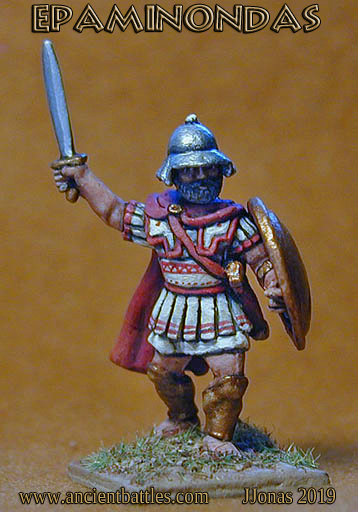
Epaminondas (ca 418-362 BC) was the greatest general and statesmen of Thebes. He was reputed as being a descendant of the Spartoi, the men born of the Dragon's teeth during the mythological foundation of Thebes. His family was noble but not wealthy. Epaminondas grew up to be a well educated and also a physically fit soldier who kept to his modest ways throughout his life Epaminondas was a symbol of great patriotism and sacrifice and like the Roman Cincinnatus never gained reward from his position or victories. He never married and the Macedonians under Philip II followed in his path of tactical innovations. Ironically the Macedonians under Alexander the Great sacked Thebes when Boeotian allies enraged by years of Theban tyranny burned the city to the ground.
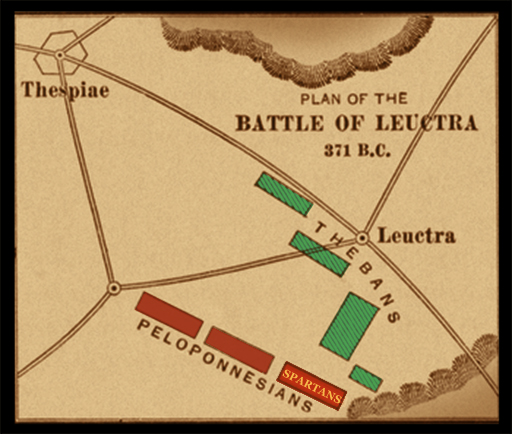
"I cannot
want for posterity. For I leave behind me a daughter,---the victory of
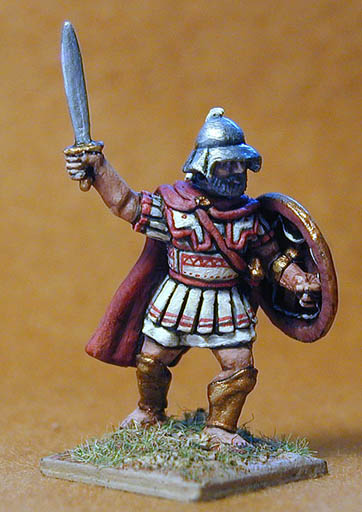
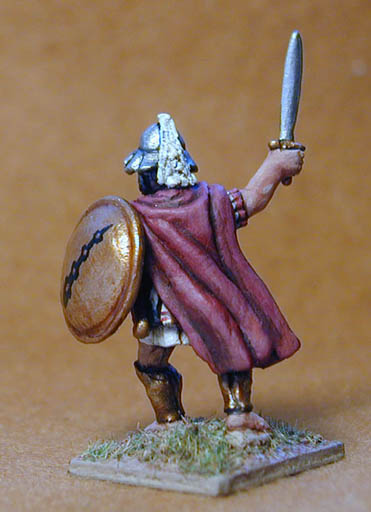
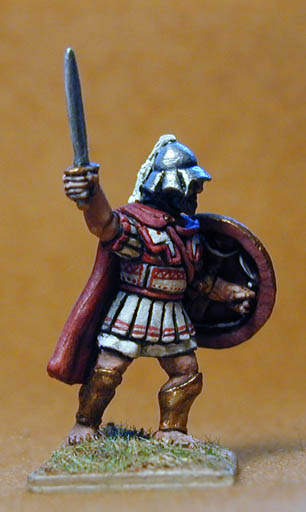
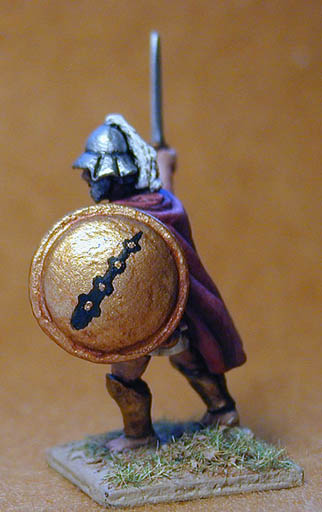
Modeling Epaminondas in 28mm is a challenge as there isn't really a model available that captures the look and feel I wanted. I finally decided on a head swap between a Newline Designs 28mm Hoplite officer with Corinthian style helm and a SkyRaider (formerly Corvus) Macedonian cavalryman's Boeotian helmeted head.
The process is very simple, the heads are lopped off with wire cutters, making sure there is enough neck on the head model and the shoulder is flush and flat ready to build a new neck. Then the two pieces are cleaned up and groove drilled for the neck. A pin hole was drilled and the pieces glued together after inserting a wire pin to keep the bond strong. A little filling with gesso cleaned up the joints. I also wanted to add a beard, so I built that up with gesso as well. A few cut ins with the blade made a nice bearded look.
Painting was straightforward. The white primed figure was painted mostly with craft paints using similar techniques as the Mercenary Hoplites at:
../../merc_hoplites/merc_greeks.htm
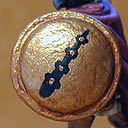
I chose to roughly follow
the color scheme presented by Angus McBride in Nick Sekunda's
Osprey Elite on the Ancient Greeks. Here a dying Boeotian general is
shown with a white tunic and a maroon cloak. His silvered helmet is the
only thing striking about him that would set him off from a regular
soldier. My figure has armor since I want him to survive at least a
round or two of combat in WAB! Life at the head of a phalanx is short
enough in WAB, let alone going in unarmored. The sword is rather
straight on the original model, I tapered it with my jeweler's file to
give it the leaf blade shape I prefer.
The magnetic base is from Fox bases, I liked them but they are more than
20mm in size so I trimmed it to fit, this was a disappointment.
Epaminondas' austerity demanded that I would not adorn his cloak, armor, or shield with intricate ornamentation. At first I wished to decorate the shield with serpent that Cadmus killed and stacks of rocks that he used to fend off the Spartoi that grew from the serpent's teeth. But the design overpowered the figure too much so I decided that Epaminondas should sport the typical shield symbol of Thebes, the club of Herakles.
The finished model is ready to take the lead of the Sacred Band or the massed Theban phalanx and be ready to "Go and take it" from the Spartan automatons.

Epaminondas followed up this smashing tactical victory with an overwhelming invasion of Sparta. This massive assault freed the Messenian helots, and established garrisons at key cities in Arcadia and Messenia to hold back Spartan aggression. The defeat at Leuctra was the beginning of the end for Sparta and forever changed the power balance in Greece.
Epaminondas was killed nine years
later at Mantinea (362) when the Spartans tried to beat the Theban
alliance by allying with Athens.
At Mantinea (362) Epaminondas
once again defeated the Spartans and their allies, but was mortally
wounded and died on the field. Xenophon, the Athenian historian
stated that the battle of Mantinea decided nothing, but he did not
foresee that a Boeotia without Epaminondas would allow the Rise of
Macedon a few years later.
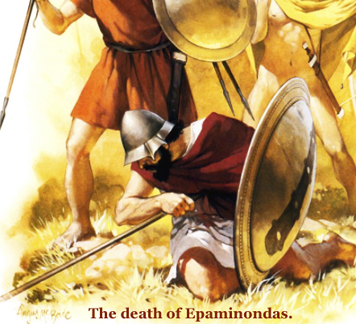
Questions or Comments Email:
Where do you want to go next? Click on: Site Map
Back to AncientBattles.Com Home Page
Copyright 2006 Jeff Jonas
04/28/07